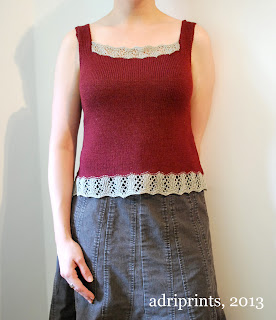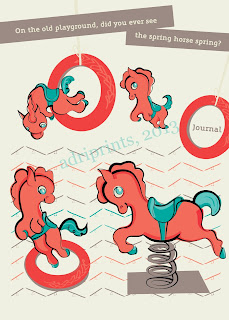Since my last post, I have been happily knitting away on my Bláithín whenever I had a spare moment. And despite the fact that spare moments haven’t been so plentiful as of late, I do have some progress to share.
Getting started meant doing a provisional crochet cast on, which I may or may not have just fudged in past projects due to my complete lack of crocheting ability. Crochet and I have had a tumultuous relationship since about 1999, when I first attempted to learn the basics. It did not end well, and for many years I called crochet late at night, crying into its answering machine and writing countless, tear-stained letters that never got sent.
But some time in the past few months, something clicked! And after butchering a granny square and proudly doing some extremely crooked edging on another project, I decided I couldn’t possibly fail at a cast on. Luckily, that turned out to be correct and I am now 100% in love with crochet cast on and will use it whenever I can.
The idea behind the provisional cast on is to do an I-cord bind off with the live stitches upon the sweater’s completion, but I am toying with the idea of adding a 2 1/2 – 3 inch colorwork section before the bind off if I have enough yarn left after doing the yoke. I certainly have plenty of time to think about it, and thanks to this particular cast on, I can decide after I see the rest of the sweater if an added colorwork section will fit with the overall design or detract too much from the yoke.
The hidden pocket construction was an absolute breeze — and so refreshing after the last pockets I did on another project which were downright fussy and fiddly. All I had to do (without giving away any vital pattern details of course) was move some stitches to waste yarn,
then knit up some quick and easy pocket flaps,
and easily join them right back in with the body (shown here after binding off the pocket openings).
The length I have now needs to be almost doubled to get to the underarm area, and I need to get started on my sleeves. That ought to keep me busy for a little while until my next post!
—————————————————————————————————–
 Amber resides in sporadically idyllic Berks County, PA with her husband and three children.
Amber resides in sporadically idyllic Berks County, PA with her husband and three children.
She can most often be found knitting, making soap, sewing, or puttering around in her garden. She should probably leave her house more often.































































